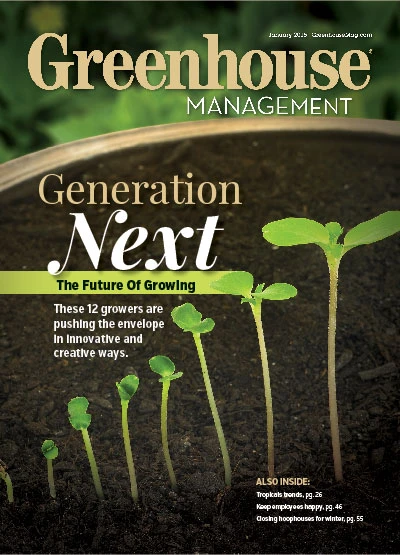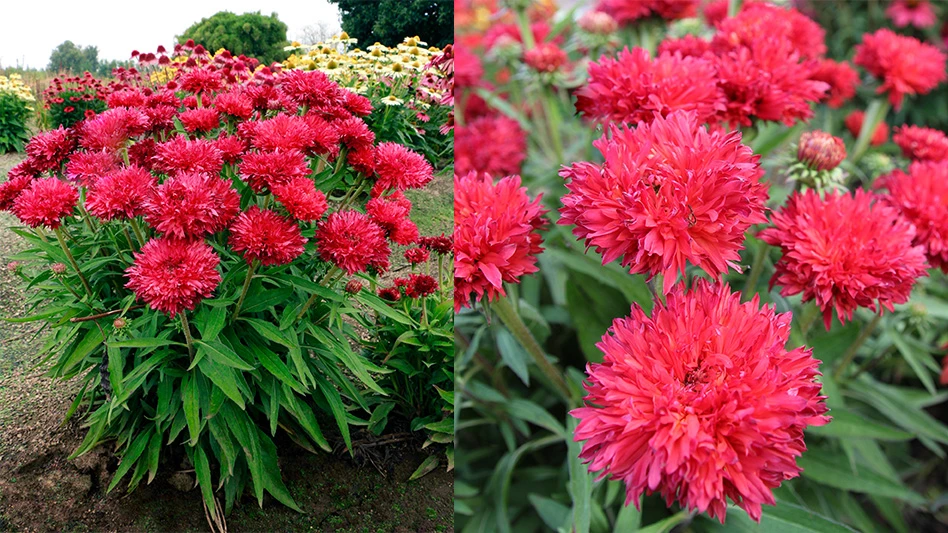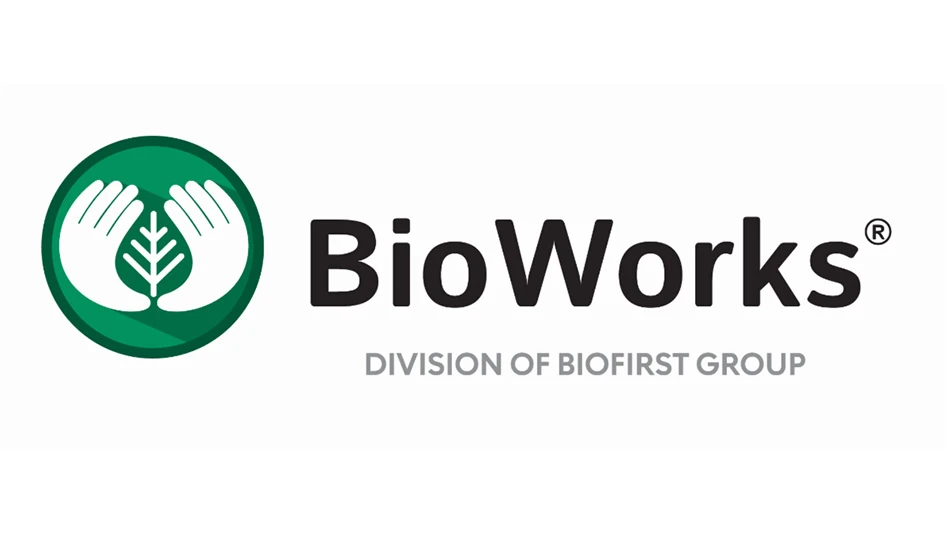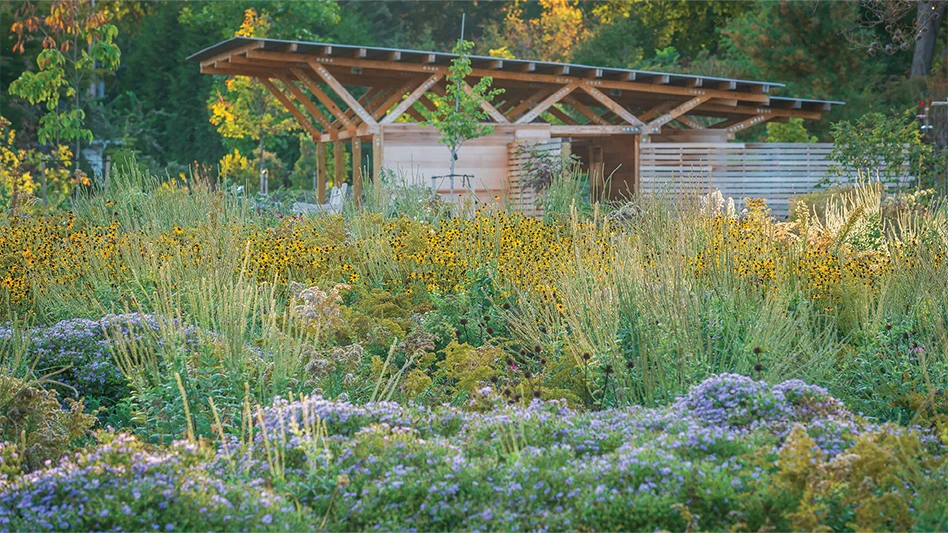 The Fungus Gnat
The Fungus Gnat
Damaging stages: One of the few insect pests encountered by greenhouse producers in which the damaging stage (larva) is located in the growing media.
Known hangouts: Frequently spotted in the growing medium. Fungus gnats are particularly problematic under excessively moist conditions during propagation — when young transplants, cuttings, plugs or seedlings are initiating root development.
How to spot and stop
Scouting or monitoring for fungus gnats, both adults and larvae, is essential in detecting the presence of fungus gnats early—before populations’ build-up to damaging levels. Yellow sticky cards, placed near the growing medium surface, are typically used for monitoring fungus gnat adults. Potato disks or wedges positioned on the surface of the growing medium may be useful in detecting the presence of larvae. The larvae are attracted to and congregate underneath the potato disks. Research has shown that potato disks recover significantly higher percentages of larvae (38%) than carrot disks (23%), and monitoring for 48 hours is more efficient in recovering larvae than 24 hours. There have been attempts made to correlate the number of adults on yellow sticky cards with larvae present on potato disks; however, no such relationships have been established. Furthermore, there are no thresholds associated with the numbers of insect pests that justify implementing management strategies to assist greenhouse producers so they can make reliable estimates of larval numbers in growing media. Moreover, there is no information regarding correlations between the numbers of fungus gnat larvae and plant damage, which would be helpful in deciding when to initiate either insecticidal or biological management strategies.
 The implementation of cultural, sanitation, and physical strategies is the first line of defense against fungus gnats and will ensure the success of either insecticide or biological control programs used against fungus gnats.
The implementation of cultural, sanitation, and physical strategies is the first line of defense against fungus gnats and will ensure the success of either insecticide or biological control programs used against fungus gnats.
Catching the pest
Insecticides: One of the primary means of dealing with fungus gnat populations is the use of insecticides (contact or insect growth regulators).
Biological control agents: Another means of dealing with the pest is biological controls, namely: the predatory mite, rove beetle or entomopathogenic nematode.
Prevention
 Water management and sanitation are important in alleviating problems with fungus gnats in greenhouse production systems. For example, greenhouses that have water accumulating and algae present typically have higher fungus gnat populations that may result in damage to greenhouse-grown horticultural crops. In general, fungus gnats are more abundant in greenhouses with soil floors than those with concrete floors. What has been consistently recommended as a means of suppressing fungus gnat larval populations is to allow the growing medium to dry out occasionally, especially the upper 2.5 to 7.7 cm (1.0 to 3.0 inches). The “dry” surface may be less attractive to ovipositing females, and even if eggs are laid in the growing medium, they will fail to hatch because of the low moisture content. However, allowing plant material to become too dry is usually not a feasible option in greenhouses, particularly during propagation as it is essential to provide sufficient moisture for plant growth and development.
Water management and sanitation are important in alleviating problems with fungus gnats in greenhouse production systems. For example, greenhouses that have water accumulating and algae present typically have higher fungus gnat populations that may result in damage to greenhouse-grown horticultural crops. In general, fungus gnats are more abundant in greenhouses with soil floors than those with concrete floors. What has been consistently recommended as a means of suppressing fungus gnat larval populations is to allow the growing medium to dry out occasionally, especially the upper 2.5 to 7.7 cm (1.0 to 3.0 inches). The “dry” surface may be less attractive to ovipositing females, and even if eggs are laid in the growing medium, they will fail to hatch because of the low moisture content. However, allowing plant material to become too dry is usually not a feasible option in greenhouses, particularly during propagation as it is essential to provide sufficient moisture for plant growth and development.
It is also usually recommended to use a well-drained growing medium, which will minimize conditions associated with too much moisture and also avoid algae growth; both of which are conducive for fungus gnat development. Algae is a prime breeding medium for fungus gnats (and shore flies). There are a number of ways to prevent the build-up of algae such as avoid overwatering plants and using commercially available disinfectants. Another strategy is to place yellow sticky tape among the crop, just above the crop canopy, to capture fungus gnat adults flying around. This method has been used successfully by greenhouse producers in the USA and worldwide. In fact, some greenhouse producers place yellow sticky tape below benches, with soil floors, to capture any adults that emerge from the soil. In addition, some greenhouse producers actually attach yellow sticky tape or more rigid yellow colored boards—similar in color to yellow sticky tape—to irrigation booms that move back-and-forth continuously; both day and night. This can be very effective in capturing “lots” of fungus gnat adults. The disposal of old growing medium will also help reduce problems with fungus gnats. It is important to either immediately remove old growing medium from within the greenhouse or place it into a container with a tight-sealing lid. If the lid is not secured, any adults may fly out and migrate back to the main crop.

Explore the January 2015 Issue
Check out more from this issue and find your next story to read.
Latest from Greenhouse Management
- Grant awarded to test western U.S. wood species for use as wood fiber potting substrate
- Pennsylvania Horticultural Society announces 2025 Gold Medal Plant winners
- Oasis Grower Solutions announces new Southeast territory sales manager
- A nation of gardeners: A history of the British horticulture industry
- Last Word with Angela Labrum, Bailey Nurseries
- Iowa plant supplier Plantpeddler building retail complex
- This month's Greenhouse Management magazine is about native plants and sustainability
- The HC Companies, Classic Home & Garden merge as Growscape





